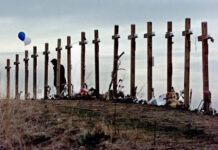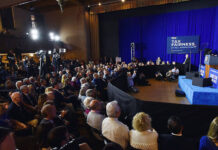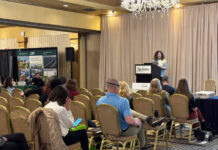SCRANTON — The ninth annual East German Film Festival at The University of Scranton will expose the active engagement of filmmakers with other visual media, including painting and sculpture. In addition to showing three films made in East Germany between 1961 and 1987, the film festival will feature commentary on both the films and the artists whose lives and work they portray.
The films will be shown 7:30 p.m. Tuesday through Thursday, March 29-31 in the Pearn Auditorium of Brennan Hall. The screenings, which are free and open to the public, are co-sponsored by the Department of World Languages and Cultures, the Art History Program, and the Hope Horn Gallery at The University of Scranton.
The festival is presented in collaboration with the DEFA (Deutsche Film-Aktiengesellschaft) Film Library at the University of Massachusetts at Amherst. The library is the only archive and research center outside of Germany devoted to films from and related to the former German Democratic Republic (GDR). This year marks DEFA’s 70th anniversary.
Jamie Trnka, Ph.D., associate professor of world languages at The University of Scranton, will introduce the films and lead a discussion following each screening.
The following films from DEFA’s collection will be screened at this year’s festival in German with English subtitles:
• Tuesday, March 29: “Käthe Kollwitz: Images of a Life” (1987, 95 minutes, color). Käthe Kollwitz (1867-1945) was 47 years old and a well-established artist in Germany and abroad when Peter, her youngest son, volunteered to fight in World War I and was killed. This painful tragedy changed Kollwitz’s life and art forever. Directed by Ralf Kirsten, this film fits parts of her unpublished letters and diaries together in a mosaic-like self-portrait.
• Wednesday, March 30: “The Lost Angel” (1966/71, 58 minutes, black and white). This expressionistic film, based on a novel by Franz Fühmann, imagines German artist Ernst Barlach’s response to the news that Nazis have dragged his famous 1927 sculpture The Hovering Angel out of the Güstrow Cathedral. Also directed by Ralf Kirsten, this film was initially banned and then later released.
• Thursday, March 31: “Five Days – Five Nights” (1961, 107 minutes, color). In a film directed by Lew Amschtam, Heinz Thiel and Anatoli Golowanow, the painter Paul Naumann aids Soviet soldiers tasked with recovering works of art hidden by the Nazis. He draws strength from the political convictions of the girlfriend he mistakenly believed to have died in a concentration camp. Together with German internationalists and antifascists, they locate and restore the city’s valuable treasure.
For more information about the film screenings, contact Trnka at 570-941-7430 or Jamie.trnka@scranton.edu.





